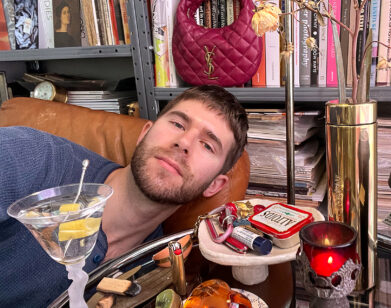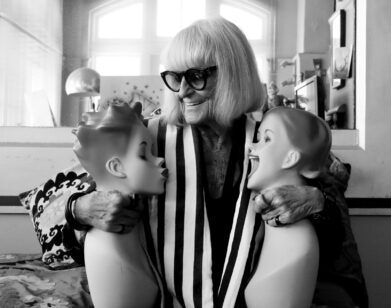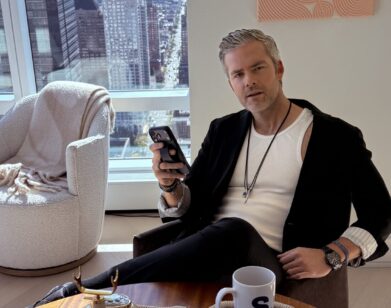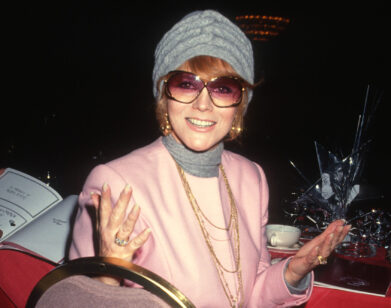Inside the Artist’s Studio: Nao Bustamante
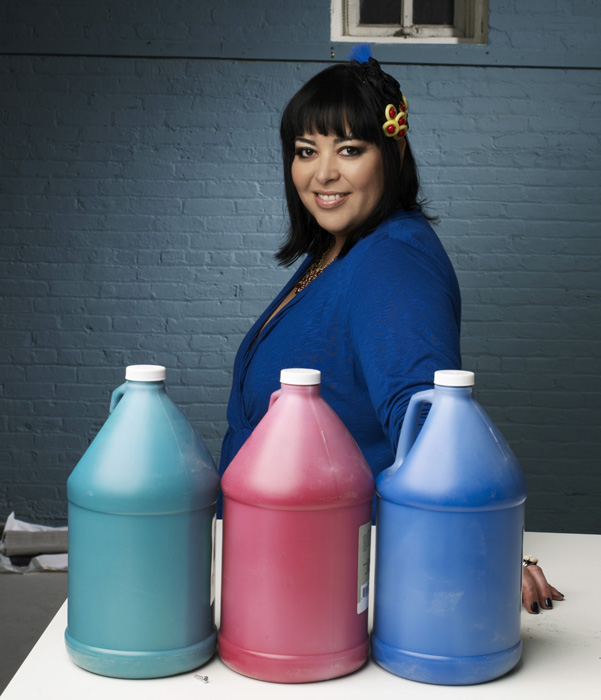
PHOTO COURTESY OF BRAVO
Â
Nao Bustamante is an artist who divides her time between Los Angeles and upstate New York, where she teaches performance and video at Rensselaer Polytechnic University (RPI). And, for an unknown number of weeks this summer, she’ll be putting in some time in art-curious living rooms and laptops everywhere as a contestant on the first reality TV show about contemporary art (to air), Bravo’s Work of Art. Arguably the most established artist on the showâ??and backed by a catalogue of media savvy performances (including a formative, old school broadcast transgression)â??I caught up with her about her latest piece, on view Wednesdays at 11 PM/10 PM Central.
KEVIN MCGARRY: Hi Nao. One thing I’d like to know is, are you, as a viewer, a fan of reality TV?
NAO BUSTAMANTE: Yeah, definitely. I really like Wife Swap, and The Real Housewives of Atlanta. And of course Ru Paul’s Drag Race. I’m sort of a fan of gritty reality TV, Dr. Drew, you know, all of the sex addict shows, that kind of thing.
MCGARRY: I’m sure you had some idea of what you were getting into when you decided to do Work of Art… but as a subject, now how do you feel about reality TV, so far?
BUSTAMANTE: I was working on a theory about it before this came up. I’m really interested in reality TV as a format for storytelling, as a way of communicating humanity, of seeing ourselvesâ??of seeing our scripted selves perform as ourselves. It’s simulacral, this removal of the self while performing the self in a quote-unquote real life situation. So I was already really interested in the use of reality TV as a format before the audition.
MCGARRY: Do you consider your participation on the show a performance?
BUSTAMANTE: Well, I was definitely interested in the different types of characters these shows engineer for social behavior, so I stereotyped myself going in as an aggressive figure… I really like the anti-heroes in a lot of my narrative stories. I was trying to present it in sort of that psychological testing way: I would be that M&M type, the hard-shell, soft-center person. The thing about presenting a shell in that situation is there’s no backstage, so the camera continually strips off your mask, and then there’s another mask underneath, and then another mask underneath that, and it goes on and on like that. So I kind of watched myself erode [Laughs] into different selves the whole time.
MCGARRY: Do you think you have a sense of how you come across on the show? How was riding the wave of the camera and editing systems?
BUSTAMANTE: I’m so used to having full control of my product and my art practice, and so probably the hardest part of the experience was giving up a control of the end result, but that was something that I signed on for, so I had to accept that and trust the process, and trust the producers who have made really successful shows in the past. I had to trust that if I brought something to the table, they’d be able to integrate it in a way that made sense for their story. Because, it’s not my story. I tried to create a story inside of their story, so we’ll see how much that comes across. I’m not really sure how it will. I’m seeing the episodes as they air.
MCGARRY: Did you or do you have concerns about how the show could affect perceptions of you and your work?
NAO: Of course, of course. I had a lot of feelings about it. As someone who’s really engaged in the absorption of popular culture and spitting it back out, I felt like I had to hop on the train and ride it out and see where it went. I’m still an artist who has engagement in the art world. I have my first gallery now, which I signed to before the show, Baer Ridgway Exhibitions in San Francisco. And I have a residency in Italy in July. So I’m going to be leaving in the middle of viewing the show to ride around on a bicycle on the coast of Italy and make art.
MCGARRY: The first time I heard about your work was when I read about your 1992 appearance on The Joan Rivers Show, in character as Rosa, the exotic exhibitionist. Do you have any reflections on how your experiences on the two shows might resonate?
BUSTAMANTE: You know, I do…being on The Joan Show was probably the most surreal experience I’ve ever had. It was taped in front of a live studio audience with Joan Rivers. The kind of information I gave and the kind of information I withheld in the interview was really interesting and scary. I feel like my piece for Work of Art is actually the show itself and my navigation of the show. With Joan I also had an intervention strategy, to propose the idea of multi-gendered ambisexuals to mainstream America. I remember laughing it up the night before in a hotel room with friends, trying to decide what kind of concepts I would introduce in the morning. I also think there’s a way in which I see my work not as a kind of lineage or direct line, but more like one big patchwork of ideas and works that are layered on each other, and then I go digging around in the hole, and I find a piece of another work. So I think that for me, it’s all one big piece, which is the way that I engage in my life.
Â

